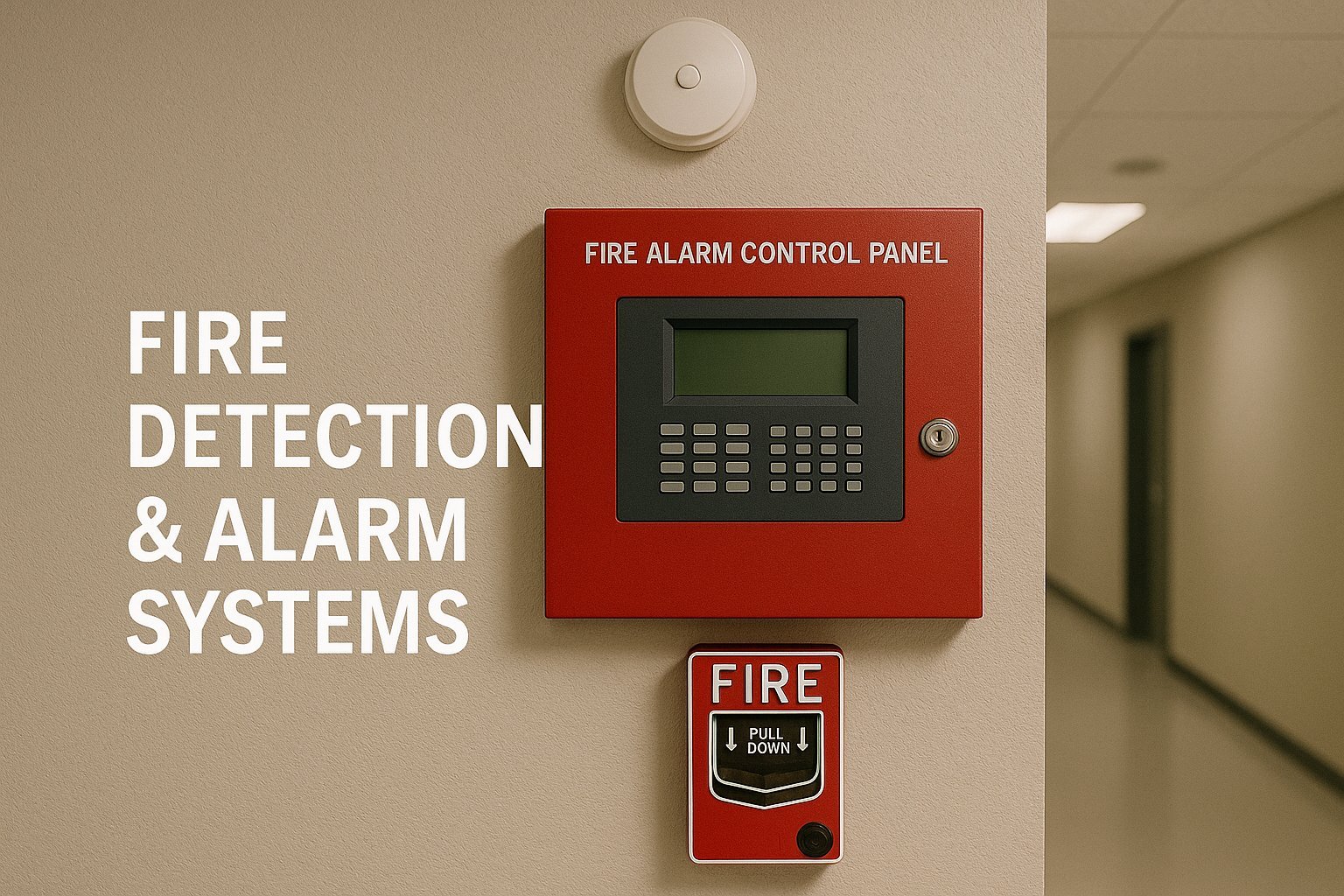Vinayak Fire Services
📞 +91 9911868080
📞 +91 9911868080

Vinayak Fire Services provides advanced Fire Detection and Alarm Systems that are crucial for the early warning of fire incidents. Our systems are designed to identify smoke, heat, or gas and alert occupants instantly, helping save lives and reduce property damage.
The choice of fire alarm system depends on the building structure, the purpose and use of the building and current legislation. In new or altered buildings the enforcement body is the local building control, and the relevant guidance is explained in section new or altered buildings. All existing buildings except domestic premises are subject to The Regulatory Reform (Fire Safety) Order 2005 and the Responsible Person, as defined in the order, has to conduct a fire risk assessment.
This guidance contains brief descriptions of the major components which go to make up a fire alarm system. The points to be considered are intended to highlight the variables which can exist and need to be considered whilst designing and compiling a specification for component parts.
We have provide cost effective Designers, Contractors, suppliers, Installation, Testing & Commissioning of Conventional Fire Alarm, Intelligent Fire Alarm, Fire Alarm Monitoring, Fire Detection, Fire Detection Systems, Fire Detection Devices, Flame Detection, Smoke Detection, Access control systems, public address systems. We are specialist in Fire Alarm Testing, Fire Alarm Training, Fire Alarm Inspection, Fire Alarm Maintenance , Fire Alarm Service , Fire Alarm Repairs in buildings.
All Fire Alarm Systems essentially operate on the same principle. If a detector detects smoke or heat or someone operates a break glass unit (manual break point), then alarm sounders operate to warn others in the building that there may be a fire and to evacuate. It may also incorporate remote signalling equipment which would alert the fire brigade via a central station.
In a Conventional Fire Alarm System, a number of call points and detectors are wired to the Fire Alarm Control Panel in Zones. A Zone is a circuit and typically one would wire a circuit per floor or fire compartment. The Fire Alarm Control Panel has a number of Zone Lamps. The reason for having Zones is to give a rough idea as to where a fire has occurred. This is important for the fire brigade and of course for the building management. The accuracy of knowing where a fire has started is controlled by the number of Zones a Control Panel has and the number of circuits that have been wired within the building. The Control Panel is wired to a minimum of two sounder circuits which could contain bells, electronic sounders or other audible devices. Each circuit has an end of line device which is used for monitoring purposes.
The detection principle of an Addressable System is similar to a Conventional System except that the Control Panel can determine exactly which detector or call point has initiated the alarm. The detection circuit is wired as a loop and up to 99 devices may be connected to each loop. The detectors are essentially Conventional Detectors, with an address built in. The address in each detector is set by dil switches and the Control Panel is programmed to display the information required when that particular detector is operated. Additional Field Devices are available which may be wired to the loop for detection only i.e. it is possible to detect a normally open contact closing such as sprinkler flow switch, or a normally closed contact opening. Sounders are wired in a minimum of two sounder circuits exactly as a Conventional System. Loop Isolation Modules are available for fitting on to the detection loop/loops such that the loop is sectioned in order to ensure that a short circuit, or one fault will only cause the loss of a minimal part of the system.
Wireless fire alarm systems are an effective alternative to traditional wired fire alarm systems for all applications. They utilise secure, licence-free radio communications to interconnect the sensors and devices (smoke detectors, call-points, etc.) with the controllers. It is a simple concept, which provides many unique benefits and is a full analogue addressable fire detection system without the need for cable.
With the support of assiduous professionals, we are instrumental in manufacturing and supplying best quality Public Address Solutions.�Our offered products owing to their precise functionality and long-range sound producing ability have made these a heavily demanded in the market. Their procurement is done from reliable vendor source that makes perfect blend of advanced technology and raw material for their fabrication. Moreover, these are offered to our clients at reasonable price tags.
The system may help to protect staff and property, restrict access for unwanted guests and log time records of all activities of movements throughout your building. Vinayak Fire Services provide a full range of products and systems, if you require a single door application or an integrated website programmed solution. Included in our services are access control software, connected to a range of readers and Identification readers. Additional devices are available such as magnetic strip, keypad proximity, biometric, card printers and smart card readers.
Offices, Schools, Warehouses, Shopping Malls, Hospitals, Data Centers, Hotels, and Residential Towers across Delhi, Noida, Gurugram, Faridabad & nearby regions.
Protect your building with reliable fire alarm and detection systems. Contact Vinayak Fire Services for expert consultation today!